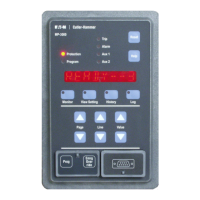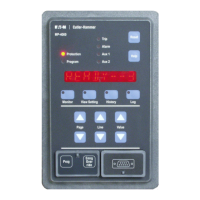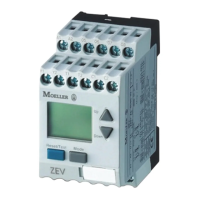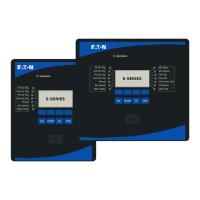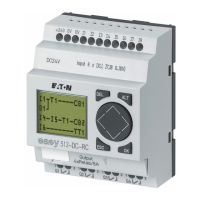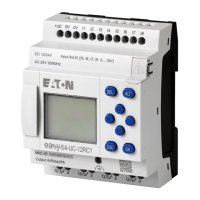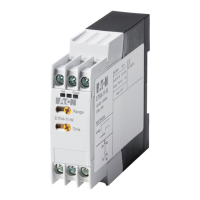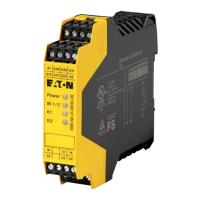For more information visit: www.cutler-hammer.eaton.com
Page 12-3
Effective 10/02 IL17562BH04
Display
GND FAULT
%I2T
STEX A
WD TEMP
MB TEMP
LB TEMP
AX TEMP
PH UNBAL
JAM
UNDER L
RTDF 3W
RTDF FIB
URTDF
RTF XX
IOC
GND FLT
JAM
Complete Help Message
GROUND FAULT ALARM
I2T ALARM
ALLOWED STARTS EXCEEDED,
WAIT IN MINUTES
STATOR WINDING TEMPERA-
TURE ALARM
MOTOR BEARING TEMPERA-
TURE ALARM
LOAD BEARING TEMPERA-
TURE ALARM
AUXILIARY OVER TEMPERA-
TURE ALARM
PHASE UNBALANCE ALARM
LOAD JAM ALARM
UNDER LOAD RUN ALARM
FAILED RTD COMMUNICA-
TION -FIB- FIBER CHAN
-3W- THREE WIRE CHAN
FAILED URTD COMMUNICA-
TION (log display only)
RTD CHANNEL FAILED ALARM
(xx = channel that failed)
INSTANTANEOUS
OVERCURRENT TRIP
GROUND FAULT TRIP
LOAD JAM TRIP
Probable Cause
Insulation failure—ground current
leakage
The thermal-model bucket level has
exceeded the alarm setting (60 to
100% of trip level).
All of the allowed count of starts in
the set time period have been used.
In each case, the temperature is
equal to or greater than the alarm
setting value.
The electrical value has crossed the
alarm threshold.
RTD temperature information
reporting through designated
medium has been lost.
A particular RTD or input to the
URTD has failed.
Electrical fault (short circuit) in
insulation of motor or connecting
circuits.
Note: If a motor trips on IOC at the
moment of starting, and an expert
has confirmed no fault, the trip may
be due to magnetic inrush. Adjust
IOC trip level and start delay to ride
through inrush peak.
Malfunction or jam of the driven
process equipment.
Solution
DANGER. Personnel hazard. Stop
and isolate motor as soon as possible
to avoid more dangerous or damaging
fault. Get expert evaluation of motor
insulation condition.
•Determine if the motor is seeing larger
than expected sustained loading.
•Check for unbalance in supply
currents or voltages causing negative-
sequence heating.
•Check for abnormal system voltage
level.
•Check for cooling air blockage or
abnormal ambient.
•Monitor the bucket level in Monitor
mode to be sure level does not
continue to rise to trip level.
Wait the number of minutes shown on
the display before restarting.
Check the problem value in the Monitor
mode and determine the cause.
Stator heat may be due to overload, or
to cooling air flow blockage.
Bearing heat usually indicates impend-
ing failure or lack of lubrication.
For unbalance, check source voltage
balance, single-phase external loads,
and uncleared unbalanced faults.
Jam and underload—look for mechani-
cal failures in driven process equip-
ment.
Check wire or fiber channel medium for
damage or disconnection.
Check URTD module for power or
malfunction.
Troubleshoot the designated RTD.
DANGER. Shut down and lock out
motor. Get expert help in evaluating
condition of motor and repair needs.
Do not try to restart without expert
evaluation.
After or during repair or replacement of
motor, check fuses in starter and
replace blown fuses.
Lock out motor starter for safety.
Check process equipment.
Table 12.1 Alarm Conditions
